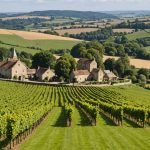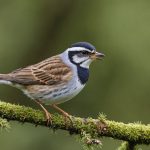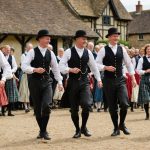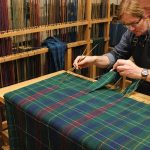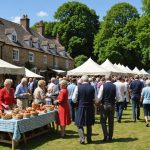Overview of Authentic English Folk Dancing
Authentic English Folk Dancing serves as a vibrant tapestry of England’s cultural practices, bringing communities together through rhythmic expressions and rich folk traditions. Rooted deeply in the rural landscapes, these dances embody history, creativity, and social bonding, offering participants an immersive experience into the heart of English culture.
In these spirited displays, several dance styles emerge, each unique in its rhythm and storytelling potential. Morris Dance, with its lively steps and use of sticks or handkerchiefs, conveys tales of battles and harvests, while the energetic Playford-inspired Country Dance, set to intricate patterns, invites groups to celebrate occasions in unity. Another notable style, the Clog Dance, centres around rhythmic footwork, paying homage to industrial heritage and local craftmanship.
Also to read : Discover Oxford”s Must-Visit Spots for an In-Depth Journey Through British Literary History
The significance of folk dancing extends beyond mere performance; it becomes a communal ritual, fostering a sense of belonging and continuity. Local festivals, fairs, and seasonal celebrations often feature these dances, providing a platform where tradition meets participation. Such gatherings strengthen communal bonds, allowing traditions to live on through engagement and shared experiences. Dancers and spectators alike cherish these moments, as they celebrate not only their heritage but the ongoing narrative of their communities.
Top Rural Villages for Folk Dancing Experiences
Exploring folk dancing experiences in rural villages offers a rich cultural tourism experience. Each village is unique, with its own traditions and events that highlight the local heritage.
Also to see : Discover the Charm of a Traditional English Village Fete: Enjoy Local Crafts and Culinary Delights!
Village 1: [Village Name]
Nestled amidst serene landscapes, this village hosts dynamic annual folk dancing experiences celebrating its vibrant heritage. Renowned for its historical dance traditions, it draws enthusiasts and newcomers alike. One noted event is the Spring Dance Festival, where traditional costumes and rhythms take center stage, captivating all who attend. Visitors frequently share glowing testimonials, often recalling the local dances as highlights of their journeys.
Village 2: [Village Name]
This charming village is famous for its unique dance styles, passed down through generations. From March to October, numerous events showcase its rich folklore. The local community is deeply involved, with dance groups playing a crucial role in preserving these traditions. Their contribution is invaluable, ensuring the vitality of folk culture remains strong and accessible to visitors.
Village 3: [Village Name]
Here, immersion in folk traditions offers a deeper understanding of the village’s history. Visitors can participate in workshops or classes throughout the year, providing hands-on learning experiences. Opportunities abound for tourists eager to engage actively in folk dancing sessions, making memories that blend entertainment with cultural enrichment.
Folk Dancing Events and Schedules
Folk dancing events in villages are a vibrant tapestry of cultural heritage. These traditional festivals and community gatherings serve as crucial platforms for showcasing and preserving regional dance traditions. Annually, several key folk dancing events punctuate village life, offering a window into rich cultural narratives.
Planning a visit around these festivals can enhance your cultural experience. Many villages synchronise their schedules with local traditional festivals, ensuring that visitors can immerse themselves fully in the vibrant atmosphere. It is advisable to check schedules in advance, as these events often coincide with seasonal harvest celebrations, reflecting the community’s agricultural roots.
Seasonal events play an essential role in maintaining folk dancing traditions, providing opportunities for younger generations to learn and perform alongside experienced dancers. These gatherings aren’t just about dance; they are about preserving the essence of communal spirit and identity. They encourage participation, ensuring the dance moves and rhythms echo through time.
For those interested in this cultural journey, it is beneficial to seek out community gatherings that align with these folk dancing events. Not only do they offer a chance to observe, but they also invite engagement and learning in a truly authentic setting.
Cultural Significance of Folk Dancing in Rural Villages
Folk dancing is not just a form of entertainment; it is a profound expression of community identity and cohesion. In rural villages, these dances are deeply rooted in folk traditions that have been preserved and cherished for generations. Through rhythmic movements and coordinated steps, participants celebrate shared values and cultural significance.
Reinforcing Community Identity and Cohesion
Folk dancing acts as a social glue, bringing individuals together and fostering a sense of belonging. Villagers gather to participate in or watch performances, creating an environment of unity and shared experience. This communal activity strengthens social bonds and encourages cooperation, which is essential for a thriving community. By engaging in collective dances, individuals reinforce their sense of identity within their cultural framework.
Historical Development and Heritage
The historical development of folk dancing in rural England is an evolution of cultural expression. Over centuries, these dances have adapted to reflect changes in society while maintaining their core traditional elements. Folk dancing serves as a living archive, passing down cultural heritage through generations, ensuring the stories and traditions of the past are preserved and honoured. This cultural continuum enriches community life, retaining its relevance even in modern times.
Resources for Travelers Interested in Folk Dancing
For travelers eager to immerse themselves in English folk dancing, several travel resources can enhance your experience. Many folk dance workshops are available across the country, which cater to both beginners and seasoned dancers. These workshops are often hosted by local dance groups, providing an authentic environment to learn and understand the dances’ cultural significance.
Recommended resources include the English Folk Dance and Song Society, which offers comprehensive directories of festivals and events. These gatherings often feature workshops where travelers can not only learn the dance moves but also its historical and cultural background.
For those seeking to delve deeper, some key publications provide fascinating insights into the history and evolution of English folk dance traditions. Books such as “The History of English Folk Dance” by Douglas Kennedy are invaluable for understanding the impact of these traditions over the centuries.
Exploring local organizations, like Morris Ring or the English Folk Dance Group, can lead to discovering vibrant communities passionate about preserving these cultural treasures. Engaging with such groups not only aids in learning but also helps travelers appreciate the uniqueness of English folk culture.


